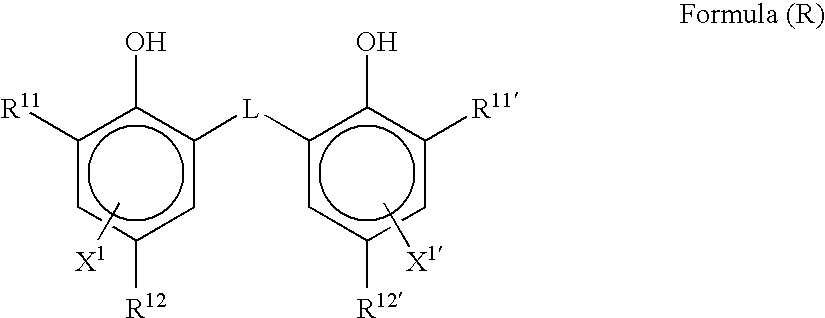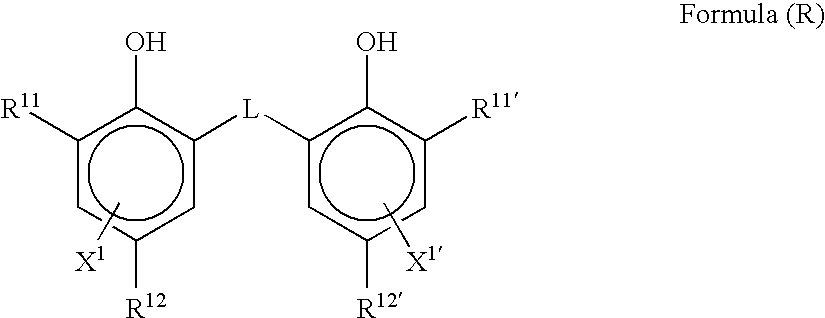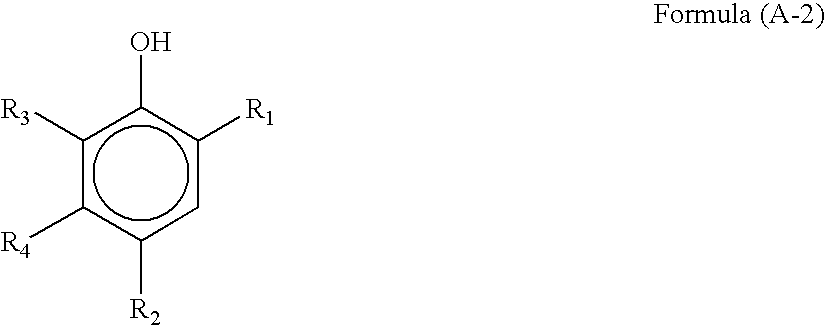Photothermographic material and image forming method
a photothermographic material and image forming technology, applied in the field of photothermographic materials and image forming methods, can solve the problems of insufficient image quality in the digital imaging recording material obtained by general image forming systems, insufficient level of medical silver salt film, and considerable difficulty in image stability, etc., to achieve excellent anti-printing property and high sensitivity
- Summary
- Abstract
- Description
- Claims
- Application Information
AI Technical Summary
Benefits of technology
Problems solved by technology
Method used
Image
Examples
first embodiment
(a Binder in an Image Forming Layer)
[0347] In the first embodiment of the photothermographic matrial of the invention, the binder of the image forming layer contains 60% by weight or more of polymer fine particle.
[0348] In the invention, the Tg of the binder of the layer including organic silver salts is preferably from −20° C. to 60° C., more preferably, from −10° C. to 50° C., further preferably, from 0° C. to 40° C.
[0349] In the specification, Tg was calculated according to the following equation.
1 / Tg=Σ(Xi / Tgi)
[0350] Where, the polymer is obtained by copolymerization of n monomer compounds (from i=1 to i=n); Xi represents the mass fraction of the ith monomer (ΣXi=1), and Tgi is the glass transition temperature (absolute temperature) of the homopolymer obtained with the ith monomer. The symbol Σ stands for the summation from i=1 to i=n. Values for the glass transition temperature (Tgi) of the homopolymers derived from each of the monomers were obtained from J. Brandrup and E. ...
second embodiment
a Binder in An Image Forming Layer
[0384] As binders used for the image forming layer in the photothermographic material of the second embodiment of the present invention, polymers copolymerized with a monomer represented by the following formula (M) in a range of from 10% by weight to 70% by weight are preferably employed.
CH2═CR01—CR02═CH2 Formula (M)
[0385] wherein R01 and R02 represent a group selected from a hydrogen atom, an alkyl groups having one to 6 carbon atoms, a halogen atom, and a cyano group, with proviso that R01 and R02 do not represent a hydrogen atom at the same time.
[0386] The alkyl group for R01 and R02 preferably is an alkyl group having one to 4 carbon atoms, and more preferably is an alkyl group having one to 2 carbon atoms. The halogen atom preferably is a fluorine atom, a chlorine atom, or a bromine atom is preferred, and more preferably is a chlorine atom. R01 and R02 most preferably are a hydrogen atom for one of them and a methyl group or a chlorine at...
synthesis example 1
Synthesis of the Aforementioned Polymer P-1:
[0417] Into the reaction vessel of gas monomer reaction apparatus (type TAS-2J manufactured by Tiatsu Garasu Kogyo Ltd.), 1500 g of distilled water were poured, and heated for 3 hours at 90° C. to make passive film over the stainless steel-made vessel surface and stainless steel-made stirring device, thereafter, 584.86 g of distilled water deaerated by nitrogen gas for one hour, 9.45 g of surfactant (“PIONIN A-43-3” produced by Takemoto Yushi Co., Ltd.), 20.25 g of 1 mol / L sodium hydroxide, 0.216 g of ethylenediamine tetraacetic acid tetrasodium salt, 332.1 g of styrene, 191.7 g of isoprene, 16.2 g of acrylic acid, and 4.32 g of tert-dodecyl mercaptan were added into the reaction vessel. And then the reaction vessel was sealed and stirred at the stirring rate of 222 rpm and elevated the inner temperature up to 60° C. A solution obtained by dissolving 2.7 g of ammonium persulfate in 50 mL of water was added to the aforesaid mixture and ke...
PUM
 Login to View More
Login to View More Abstract
Description
Claims
Application Information
 Login to View More
Login to View More - R&D
- Intellectual Property
- Life Sciences
- Materials
- Tech Scout
- Unparalleled Data Quality
- Higher Quality Content
- 60% Fewer Hallucinations
Browse by: Latest US Patents, China's latest patents, Technical Efficacy Thesaurus, Application Domain, Technology Topic, Popular Technical Reports.
© 2025 PatSnap. All rights reserved.Legal|Privacy policy|Modern Slavery Act Transparency Statement|Sitemap|About US| Contact US: help@patsnap.com



